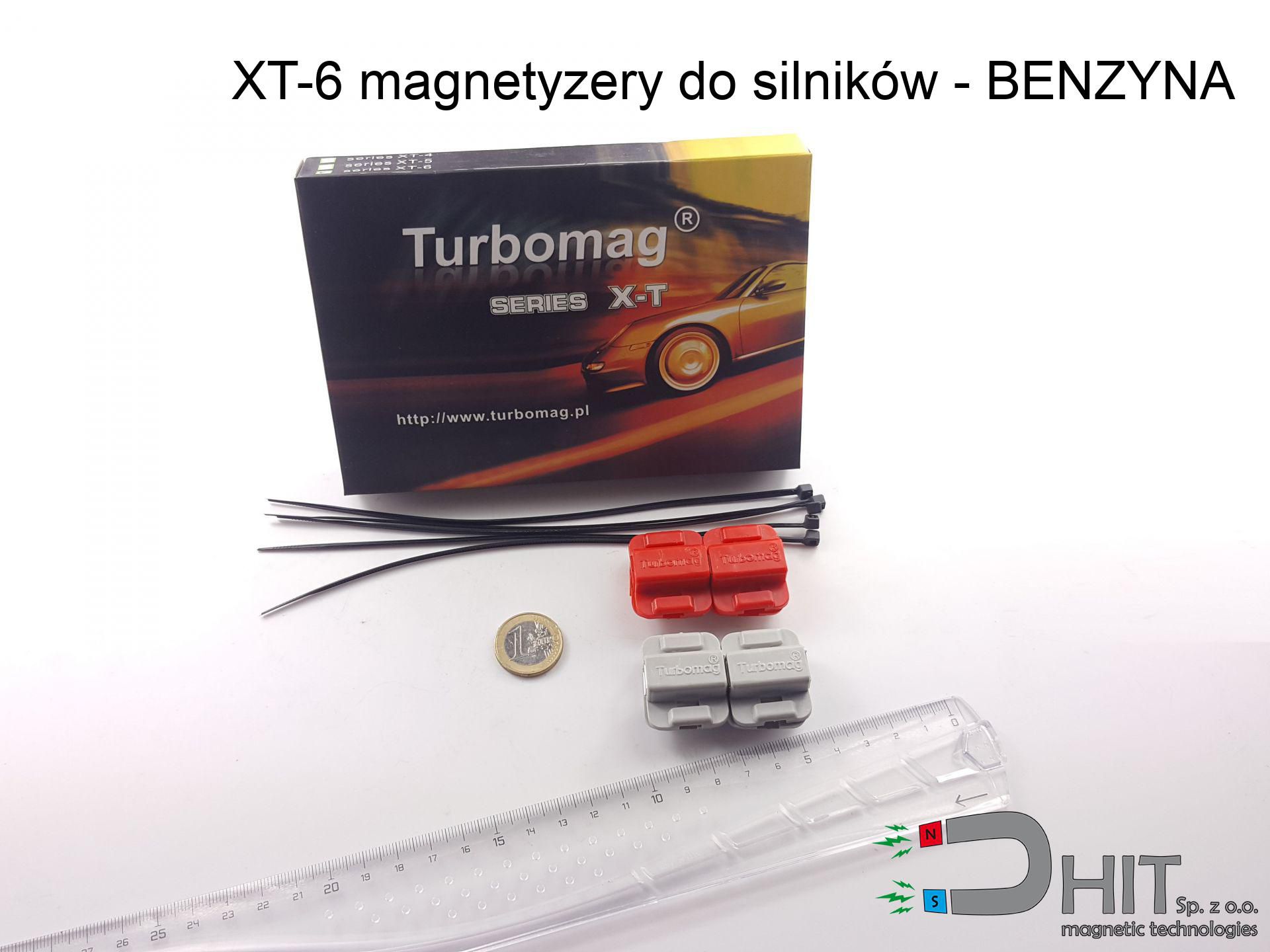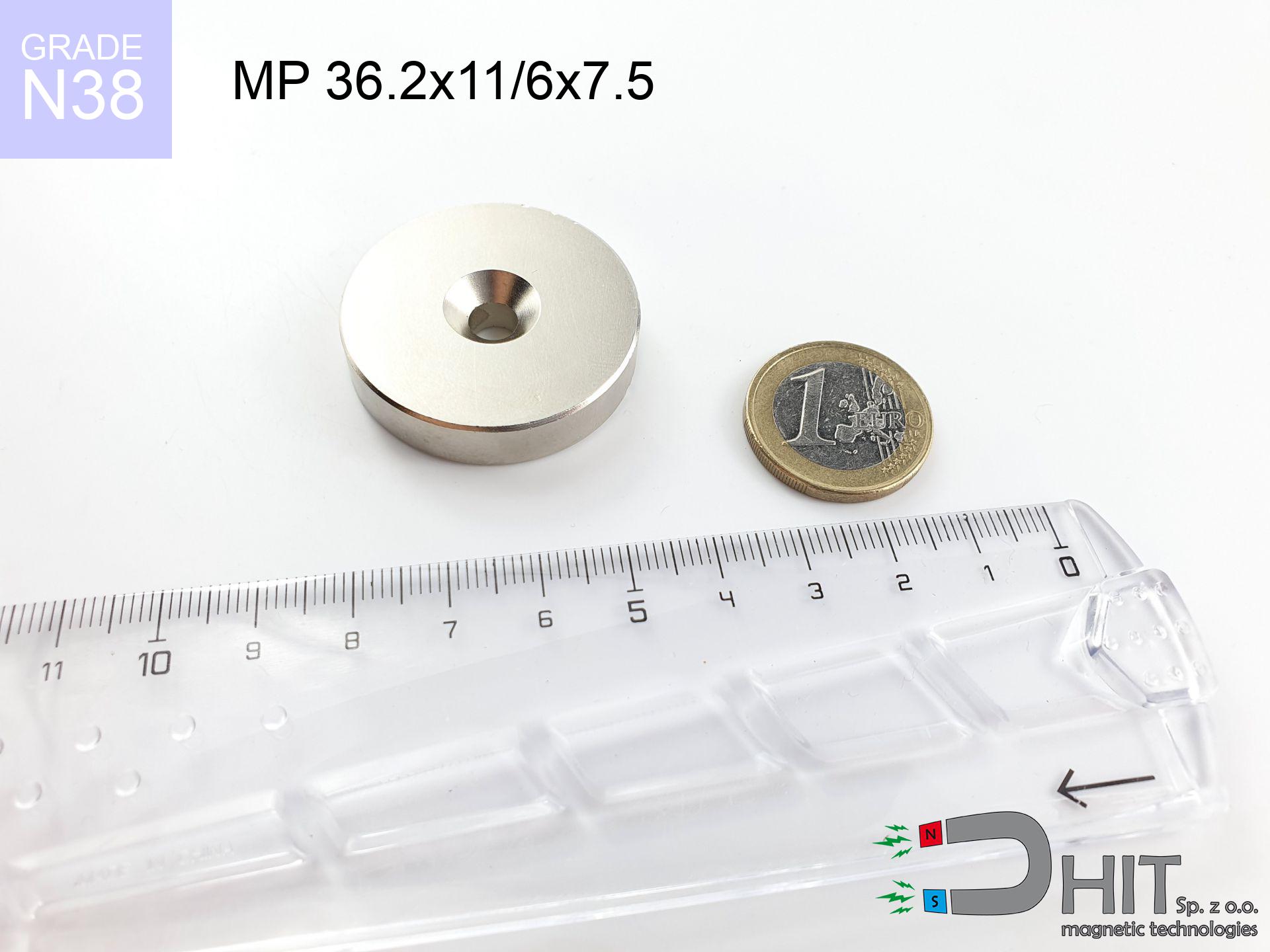UMP 75x25 [M10x3] GW F200 GOLD DUAL / N42 - search holder
search holder
Catalog no 210452
GTIN/EAN: 5906301814122
Diameter Ø
75 mm [±1 mm]
Height
25 mm [±1 mm]
Weight
1800 g
Load capacity
601.00 kg / 5893.80 N
Coating
[NiCuNi] Nickel
Magnetic Flux
~ 20 000 Gauss [±5%]
245.00 ZŁ with VAT / pcs + price for transport
199.19 ZŁ net + 23% VAT / pcs
bulk discounts:
Need more?
Contact us by phone
+48 22 499 98 98
if you prefer drop us a message using
form
the contact page.
Strength as well as appearance of magnets can be calculated with our
magnetic calculator.
Orders submitted before 14:00 will be dispatched today!
💡 Check why professionals choose Dhit over cheap substitutes
Don't be fooled by amateur online tests – go for certified quality and specific parameters that guarantee success:
- 📏 Magnet thickness in the casing (min. 10mm) – This is what matters most! Thin magnets are weak. Thanks to the 1cm thickness of N52 neodymium, your magnet "sees" metal even through thick rust and mud.
- 🛡️ Armored protection (Black Epoxy) – Forget about rust. This coating doesn't chip when hitting rocks and protects the magnet in water much better than regular nickel, which fails quickly.
- 🧲 Eyelets that don't steal power – Made of special non-magnetic steel, so they don't stick to the magnet and don't block the force. Important: mount only one eyelet at a time! Using 3 at once is a mistake that weakens the magnet.
- 🧶 Certified rope (min. 8mm) – You gain the certainty that your gear won't stay at the bottom. It's thick and comfortable, so it doesn't cut your fingers when pulling out heavy scrap metal.
- 🚀 Our advantage: We are the only ones combining the strongest N52 neodymium (10mm thick) with non-magnetic eyelets. This is real power and durability you won't find anywhere else.
Invest in solid equipment and enjoy the results!
Physical properties - UMP 75x25 [M10x3] GW F200 GOLD DUAL / N42 - search holder
Specification / characteristics - UMP 75x25 [M10x3] GW F200 GOLD DUAL / N42 - search holder
| properties | values |
|---|---|
| Cat. no. | 210452 |
| GTIN/EAN | 5906301814122 |
| Production/Distribution | Dhit sp. z o.o. |
| Country of origin | Poland / China / Germany |
| Customs code | 85059029 |
| Diameter Ø | 75 mm [±1 mm] |
| Height | 25 mm [±1 mm] |
| Weight | 1800 g |
| Load capacity ~ ? | 601.00 kg / 5893.80 N |
| Coating | [NiCuNi] Nickel |
| Series | GOLD |
| Holder Type | 2 sided |
| Material Type | Structural steel S235 (ferrous) |
| Magnetic Flux | ~ 20 000 Gauss [±5%] |
| Size/Mount Quantity | 4xM10 |
| Manufacturing Tolerance | ±1 mm |
Magnetic properties of material N42
| properties | values | units |
|---|---|---|
| remenance Br [min. - max.] ? | 12.9-13.2 | kGs |
| remenance Br [min. - max.] ? | 1290-1320 | mT |
| coercivity bHc ? | 10.8-12.0 | kOe |
| coercivity bHc ? | 860-955 | kA/m |
| actual internal force iHc | ≥ 12 | kOe |
| actual internal force iHc | ≥ 955 | kA/m |
| energy density [min. - max.] ? | 40-42 | BH max MGOe |
| energy density [min. - max.] ? | 318-334 | BH max KJ/m |
| max. temperature ? | ≤ 80 | °C |
Physical properties of sintered neodymium magnets Nd2Fe14B at 20°C
| properties | values | units |
|---|---|---|
| Vickers hardness | ≥550 | Hv |
| Density | ≥7.4 | g/cm3 |
| Curie Temperature TC | 312 - 380 | °C |
| Curie Temperature TF | 593 - 716 | °F |
| Specific resistance | 150 | μΩ⋅cm |
| Bending strength | 250 | MPa |
| Compressive strength | 1000~1100 | MPa |
| Thermal expansion parallel (∥) to orientation (M) | (3-4) x 10-6 | °C-1 |
| Thermal expansion perpendicular (⊥) to orientation (M) | -(1-3) x 10-6 | °C-1 |
| Young's modulus | 1.7 x 104 | kg/mm² |
Elemental analysis
| iron (Fe) | 64% – 68% |
| neodymium (Nd) | 29% – 32% |
| boron (B) | 1.1% – 1.2% |
| dysprosium (Dy) | 0.5% – 2.0% |
| coating (Ni-Cu-Ni) | < 0.05% |
Environmental data
| recyclability (EoL) | 100% |
| recycled raw materials | ~10% (pre-cons) |
| carbon footprint | low / zredukowany |
| waste code (EWC) | 16 02 16 |
See more proposals
Pros as well as cons of Nd2Fe14B magnets.
Advantages
- They retain full power for almost ten years – the drop is just ~1% (according to analyses),
- They show high resistance to demagnetization induced by external disturbances,
- Thanks to the smooth finish, the surface of nickel, gold-plated, or silver gives an professional appearance,
- Neodymium magnets ensure maximum magnetic induction on a small area, which increases force concentration,
- Thanks to resistance to high temperature, they are able to function (depending on the form) even at temperatures up to 230°C and higher...
- Possibility of detailed machining and modifying to individual needs,
- Fundamental importance in high-tech industry – they are commonly used in mass storage devices, drive modules, diagnostic systems, and technologically advanced constructions.
- Compactness – despite small sizes they provide effective action, making them ideal for precision applications
Disadvantages
- To avoid cracks under impact, we recommend using special steel housings. Such a solution secures the magnet and simultaneously improves its durability.
- Neodymium magnets demagnetize when exposed to high temperatures. After reaching 80°C, many of them experience permanent drop of strength (a factor is the shape as well as dimensions of the magnet). We offer magnets specially adapted to work at temperatures up to 230°C marked [AH], which are extremely resistant to heat
- They oxidize in a humid environment - during use outdoors we suggest using waterproof magnets e.g. in rubber, plastic
- Limited possibility of creating threads in the magnet and complex shapes - recommended is a housing - magnetic holder.
- Potential hazard resulting from small fragments of magnets can be dangerous, in case of ingestion, which becomes key in the context of child health protection. Additionally, small components of these devices can be problematic in diagnostics medical after entering the body.
- With mass production the cost of neodymium magnets is a challenge,
Holding force characteristics
Breakaway strength of the magnet in ideal conditions – what affects it?
- using a sheet made of low-carbon steel, functioning as a circuit closing element
- with a cross-section no less than 10 mm
- with an ground touching surface
- under conditions of no distance (metal-to-metal)
- during detachment in a direction vertical to the mounting surface
- at temperature approx. 20 degrees Celsius
Lifting capacity in practice – influencing factors
- Gap (between the magnet and the metal), as even a microscopic clearance (e.g. 0.5 mm) results in a decrease in lifting capacity by up to 50% (this also applies to varnish, rust or dirt).
- Angle of force application – highest force is obtained only during pulling at a 90° angle. The shear force of the magnet along the plate is typically several times lower (approx. 1/5 of the lifting capacity).
- Metal thickness – thin material does not allow full use of the magnet. Magnetic flux passes through the material instead of converting into lifting capacity.
- Material type – ideal substrate is pure iron steel. Cast iron may attract less.
- Smoothness – ideal contact is obtained only on polished steel. Rough texture reduce the real contact area, reducing force.
- Operating temperature – neodymium magnets have a sensitivity to temperature. When it is hot they lose power, and in frost gain strength (up to a certain limit).
Lifting capacity was assessed by applying a steel plate with a smooth surface of optimal thickness (min. 20 mm), under perpendicular pulling force, in contrast under parallel forces the load capacity is reduced by as much as 5 times. In addition, even a small distance between the magnet’s surface and the plate reduces the load capacity.
Safe handling of NdFeB magnets
Nickel coating and allergies
Studies show that nickel (the usual finish) is a potent allergen. If your skin reacts to metals, avoid touching magnets with bare hands or choose versions in plastic housing.
Do not underestimate power
Exercise caution. Neodymium magnets attract from a long distance and connect with huge force, often quicker than you can react.
Medical interference
People with a pacemaker have to keep an safe separation from magnets. The magnetism can stop the operation of the life-saving device.
Fragile material
Protect your eyes. Magnets can explode upon uncontrolled impact, launching shards into the air. Wear goggles.
Dust is flammable
Fire warning: Rare earth powder is explosive. Avoid machining magnets in home conditions as this risks ignition.
Do not give to children
Absolutely store magnets out of reach of children. Risk of swallowing is significant, and the effects of magnets clamping inside the body are tragic.
Bone fractures
Protect your hands. Two powerful magnets will snap together immediately with a force of several hundred kilograms, crushing everything in their path. Be careful!
Keep away from electronics
An intense magnetic field negatively affects the functioning of compasses in phones and navigation systems. Keep magnets close to a device to avoid breaking the sensors.
Magnetic media
Avoid bringing magnets near a wallet, laptop, or screen. The magnetic field can permanently damage these devices and wipe information from cards.
Permanent damage
Do not overheat. NdFeB magnets are sensitive to heat. If you require resistance above 80°C, inquire about HT versions (H, SH, UH).

![Search magnet UMP 75x25 [M10x3] GW F200 GOLD DUAL / N42 - GOLD Series Search magnet UMP 75x25 [M10x3] GW F200 GOLD DUAL / N42 - GOLD Series](https://cdn3.dhit.pl/graphics/banners/magnet.webp)
![UMP 75x25 [M10x3] GW F200 GOLD DUAL / N42 - search holder](https://cdn3.dhit.pl/graphics/products/ump-75x25-m10x3-gw-f200-gold-dual-xoc.jpg)
![UMP 75x25 [M10x3] GW F200 GOLD DUAL / N42 - search holder - ujęcie 2](https://cdn3.dhit.pl/graphics/products/ump-75x25-m10x3-gw-f200-gold-dual-roj.jpg)
![SM 32x100 [2xM8] / N42 - magnetic separator SM 32x100 [2xM8] / N42 - magnetic separator](https://cdn3.dhit.pl/graphics/products/sm-32x100-2xm8-cox.jpg)
![UMGGZ 43x6 [M6] GZ / N38 - rubber magnetic holder external thread UMGGZ 43x6 [M6] GZ / N38 - rubber magnetic holder external thread](https://cdn3.dhit.pl/graphics/products/umg-43x6-m6-gz-miw.jpg)



